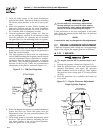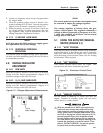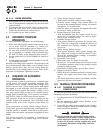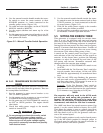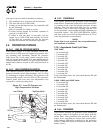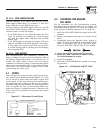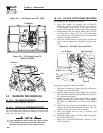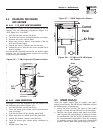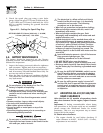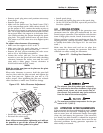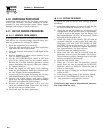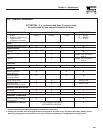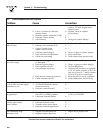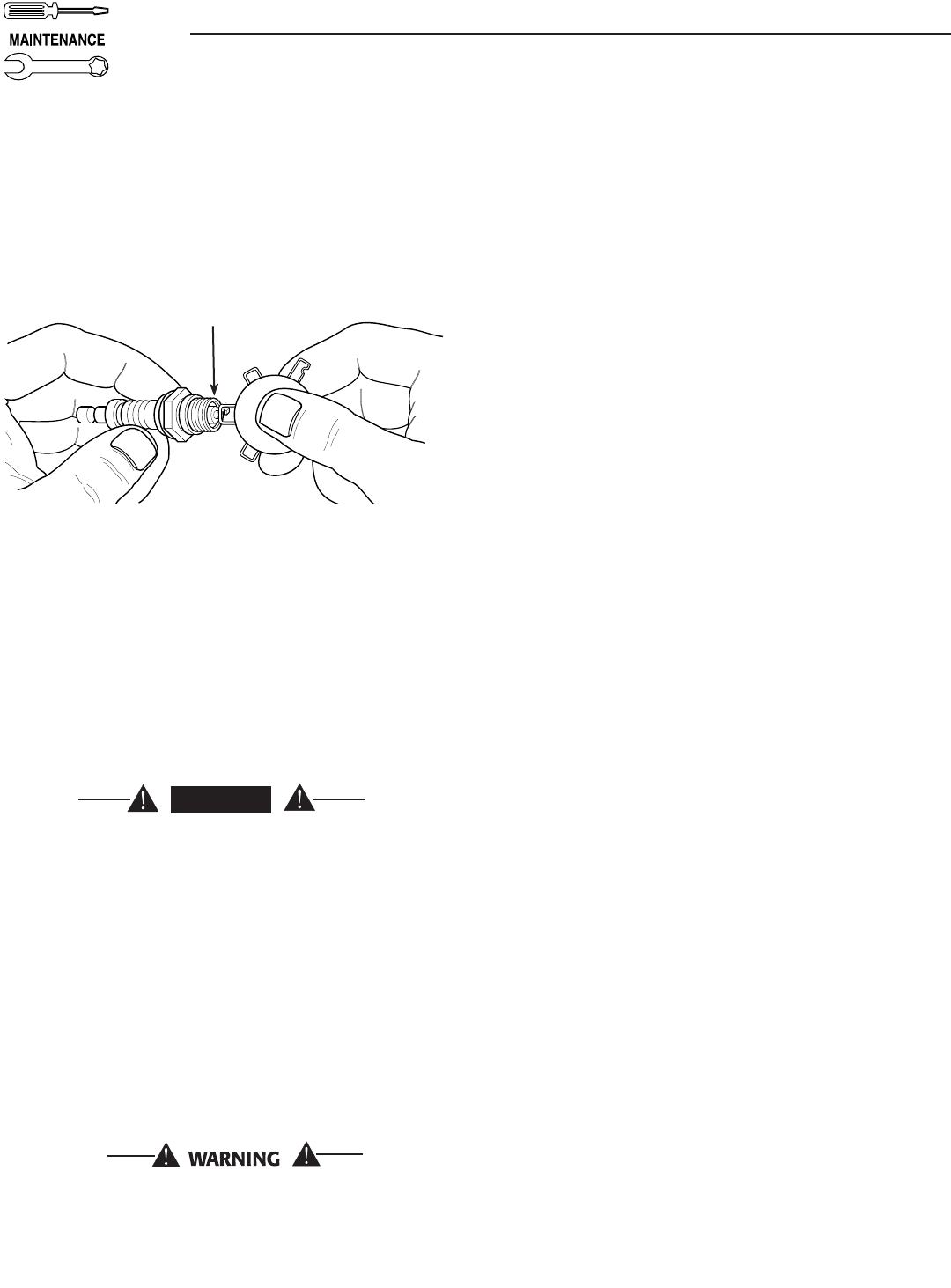
22
3. Check the spark plug gap using a wire feeler
gauge. Adjust the gap to 0.76 mm (0.030 inch) for
7 and 10kW; and 1.02 mm (0.040 inch) for 13/16
kW by carefully bending the ground electrode
(Figure 4.9).
Figure 4.9 – Setting the Spark Plug Gap
4.6 BATTERY MAINTENANCE
The battery should be inspected per the "Service
Schedule" section. The following procedure should be
followed for inspection:
1. Inspect the battery posts and cables for tightness
and corrosion. Tighten and clean as necessary.
2. Check the battery fluid level of unsealed batteries
and, if necessary, fill with Distilled Water Only. Do
not use tap water in batteries.
3. Have the state of charge and condition checked.
This should be done with an automotive-type bat-
tery hydrometer.
DANGER
Do not dispose of the battery in a fire. The
battery is capable of exploding.
A battery presents a risk of electrical shock
and high short circuit current. The following pre-
cautions are to be observed when working on
batteries:
• Remove the 15A fuse from the generator control
panel.
• Remove watches, rings or other metal objects;
• Use tools with insulated handles;
• Wear rubber gloves and boots;
• Do not lay tools or metal parts on top of the
battery; and
• Disconnect charging source prior to connecting or
disconnecting battery terminals.
Do not open or mutilate the battery. Released
electrolyte has been known to be harmful to the
skin and eyes, and to be toxic.
The electrolyte is a dilute sulfuric acid that is
harmful to the skin and eyes. It is electrically
conductive and corrosive. The following
procedures are to be observed:
• Wear full eye protection and protective clothing;
• Where electrolyte contacts the skin, wash it off
immediately with water;
• Where electrolyte contacts the eyes, flush
thoroughly and immediately with water and seek
medical attention; and
• Spilled electrolyte is to be washed down with an
acid neutralizing agent. A common practice is to
use a solution of 1 pound (500 grams) bicarbonate
of soda to 1 gallon (4 liters) of water. The bicar-
bonate of soda solution is to be added until the
evidence of reaction (foaming) has ceased. The
resulting liquid is to be flushed with water and the
area dried.
Lead-acid batteries present a risk of fire because
they generate hydrogen gas. The
following procedures are to be followed:
• DO NOT SMOKE when near the battery;
• DO NOT cause flame or spark in battery area; and
• Discharge static electricity from body before touch-
ing the battery by first touching a grounded metal
surface.
Be sure the AUTO/OFF/MANUAL switch is set to
the OFF position before connecting the battery
cables. If the switch is set to AUTO or MANUAL,
the generator can crank and start as soon as the
battery cables are connected.
Be sure the utility power supply is turned off
and the 15A fuse is removed from the generator
control panel, or sparking may occur at the bat-
tery posts as the cables are attached and cause
an explosion.
4.7 ADJUSTING GH-410/GT-530/990
VALVE CLEARANCE
After the first six (6) months of operation, check
the valve clearance in the engine, adjust if neces-
sary.
Important: If feeling uncomfortable about doing
this procedure or the proper tools are not available,
please contact the Authorized Dealer for service
assistance. This is a very important step to insure
longest life for the engine.
To check valve clearance:
The engine should be cool before checking. If
valve clearance is 0.002" - 0.004" (0.05 - 0.1mm),
adjustment is not needed.
•
Section 4 — Maintenance
Air-cooled Generators
SET PLUG GAP AT 0.76 mm (.030 inch) - 7 & 10kW;
1.02 mm (.040 inch) - 13 & 16kW



